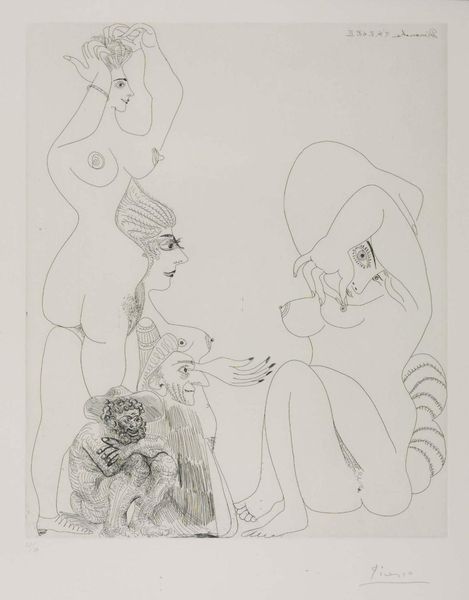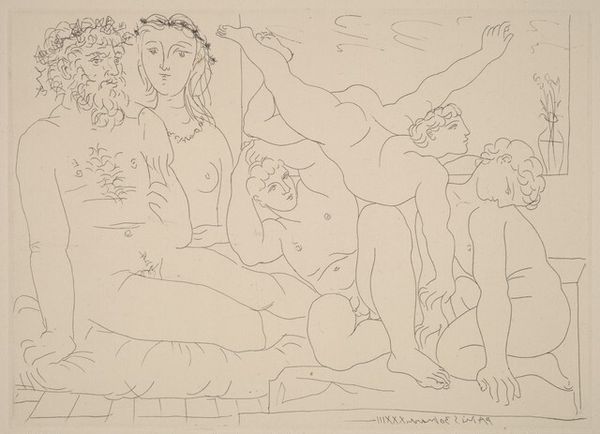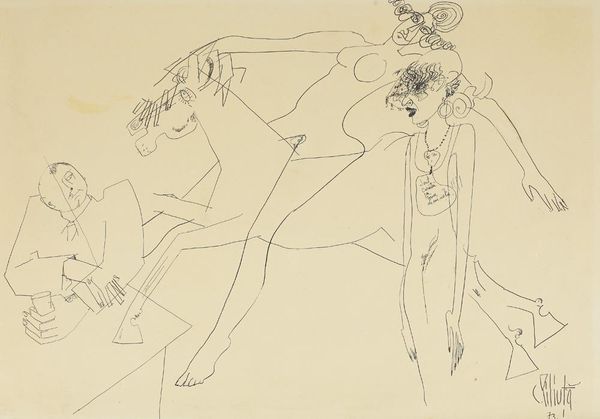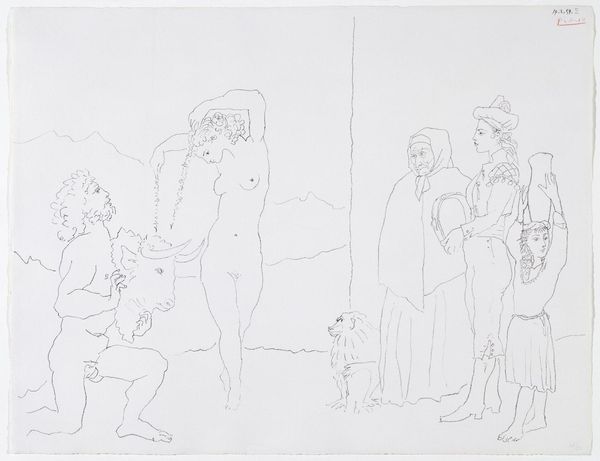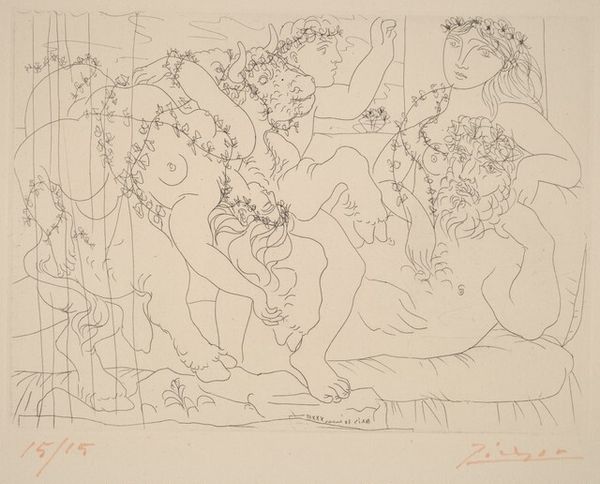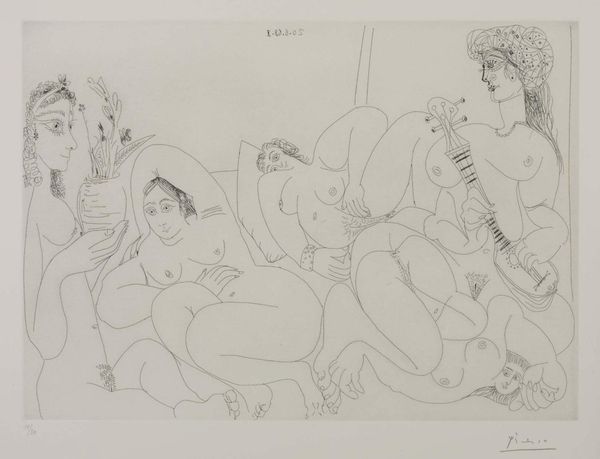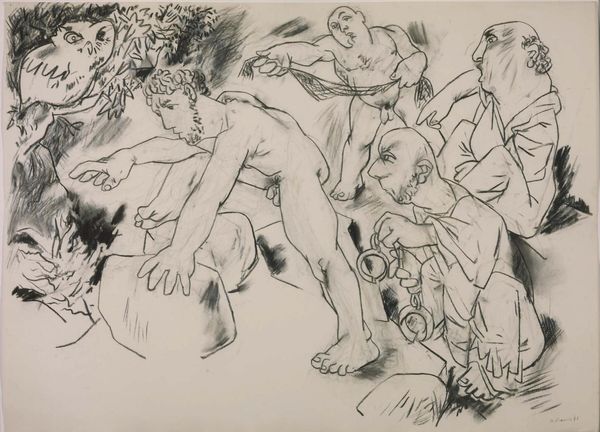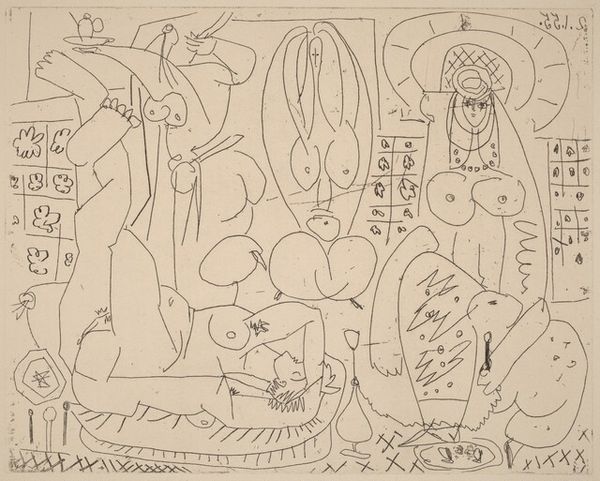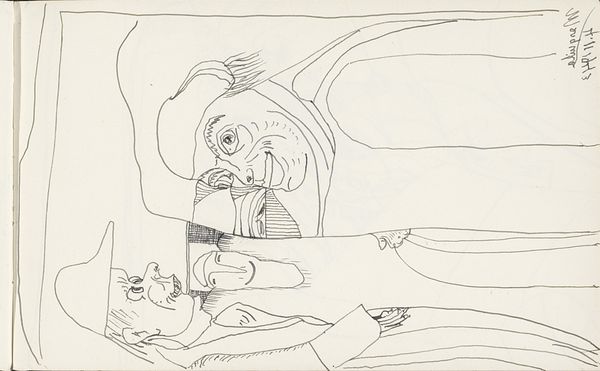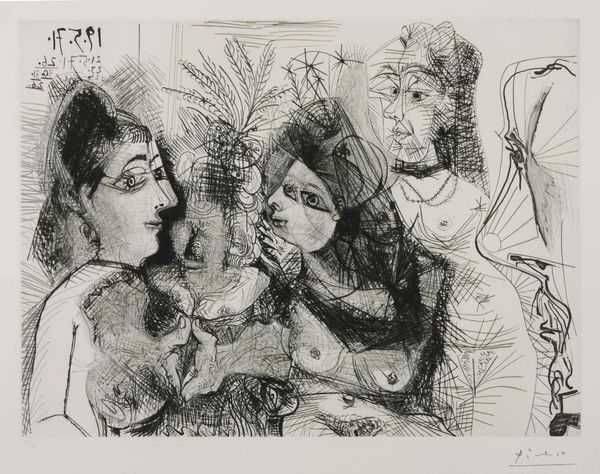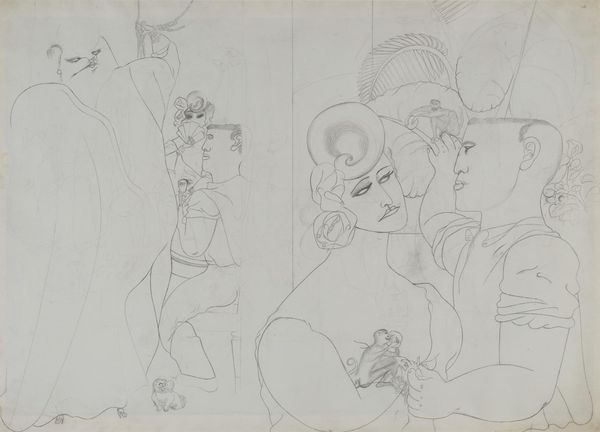
Dimensions: unconfirmed: 370 x 500 mm
Copyright: © Succession Picasso/DACS 2014 | CC-BY-NC-ND 4.0 DEED, Photo: Tate
Editor: This is Picasso’s etching from April 10th, 1971. It's a whirlwind of bodies and faces; almost unsettling. What do you make of this gathering? Curator: I see Picasso grappling with his own legacy, reflecting on themes of sexuality and power that permeated his life and art. The figures seem to echo historical archetypes, inviting questions about gender roles and artistic dominance. Editor: Artistic dominance? Curator: Yes, consider how Picasso positions himself within art history, particularly in relation to female subjects. This etching prompts us to examine the male gaze and its perpetuation within art. What do you think? Editor: It's a lot to unpack, but I see how the composition contributes to these ideas about power. Thanks!
Comments
tate 6 months ago
⋮
http://www.tate.org.uk/art/artworks/picasso-etching-10-april-1971-l112-p77587
Join the conversation
Join millions of artists and users on Artera today and experience the ultimate creative platform.
tate 6 months ago
⋮
Confronted by old age and impotence, Picasso was defiantly productive. These works are drawn from the series of 156 prints which he made between 1970 and 1972, around the age of 90. The series has been compared to a private theatre, in which the actors are Picasso himself, his close friends, and his favourite artists of the past. In the works shown here, Picasso appears as both a gnarled satyr, and as a shadowy silhouette looking on at two prostitutes. The face of his wife Jacqueline is portrayed in an artist’s sketchbook, as he watches a group of top-hatted clients enter a brothel. The Impressionist artist Edgar Degas appears as a frock-coated voyeur. The fixation with sexuality and voyeurism is bound up with an awareness of mortality. For Picasso, art had become the only means to defy the approach of death. Gallery label, August 2004
